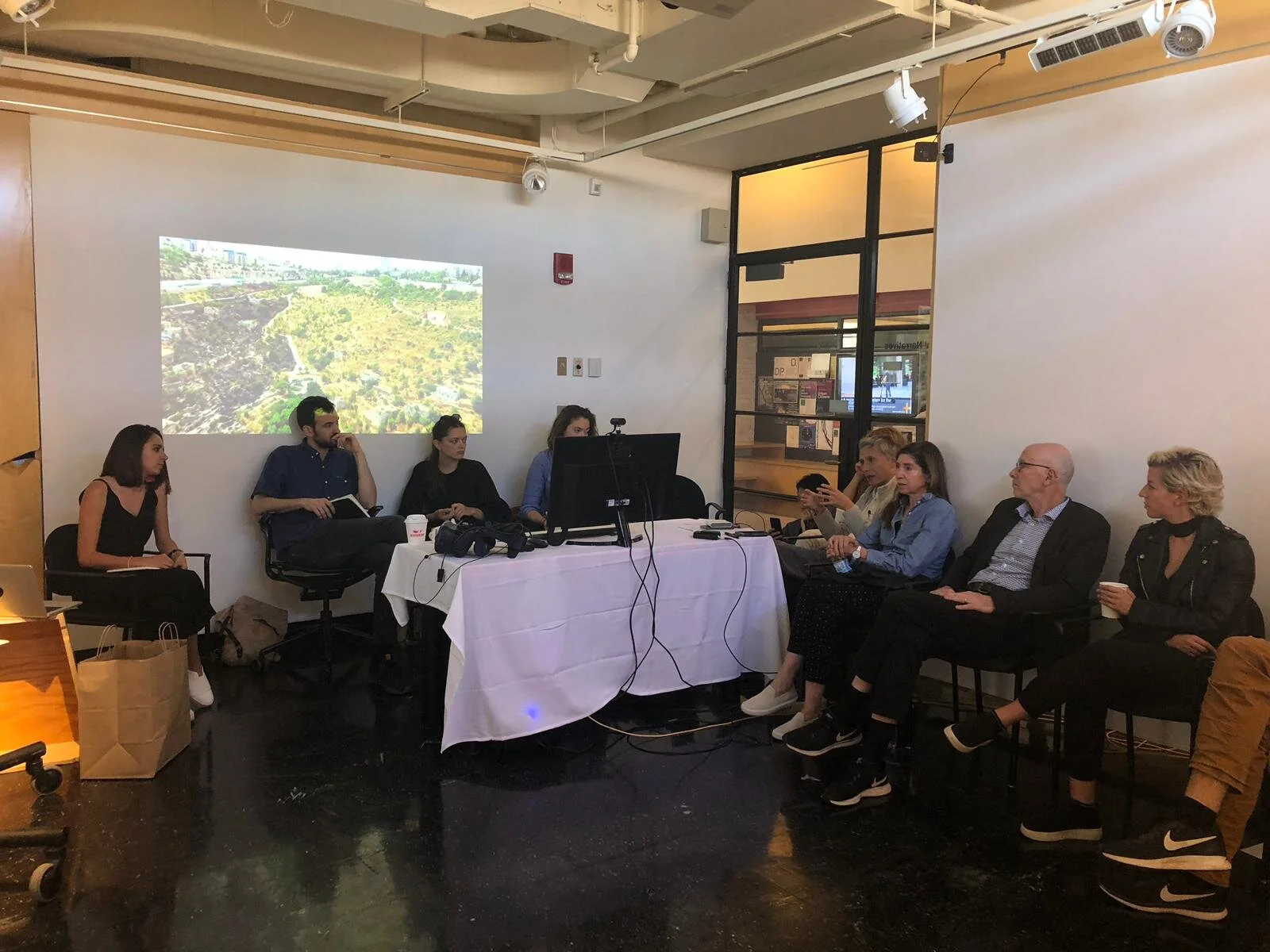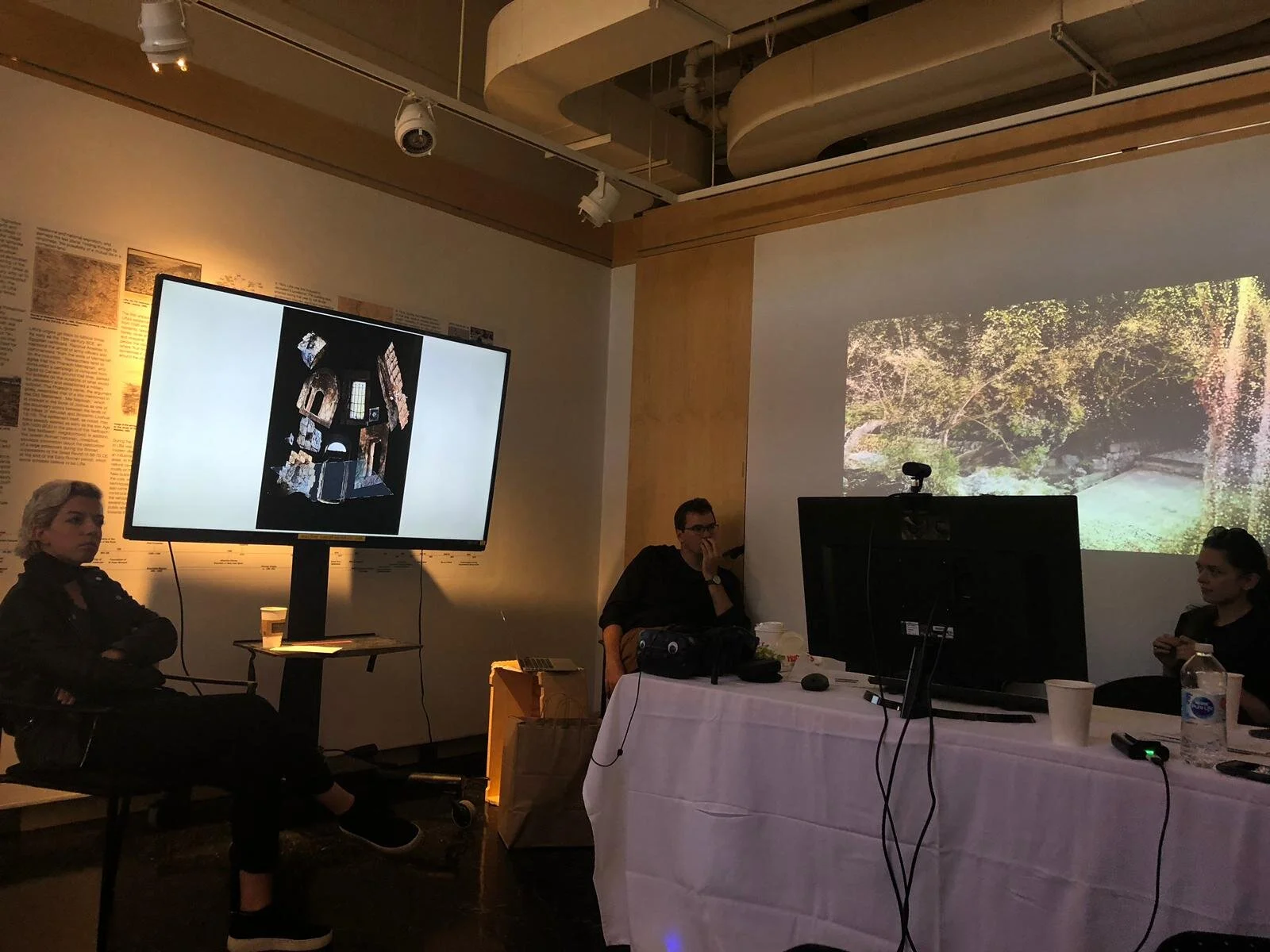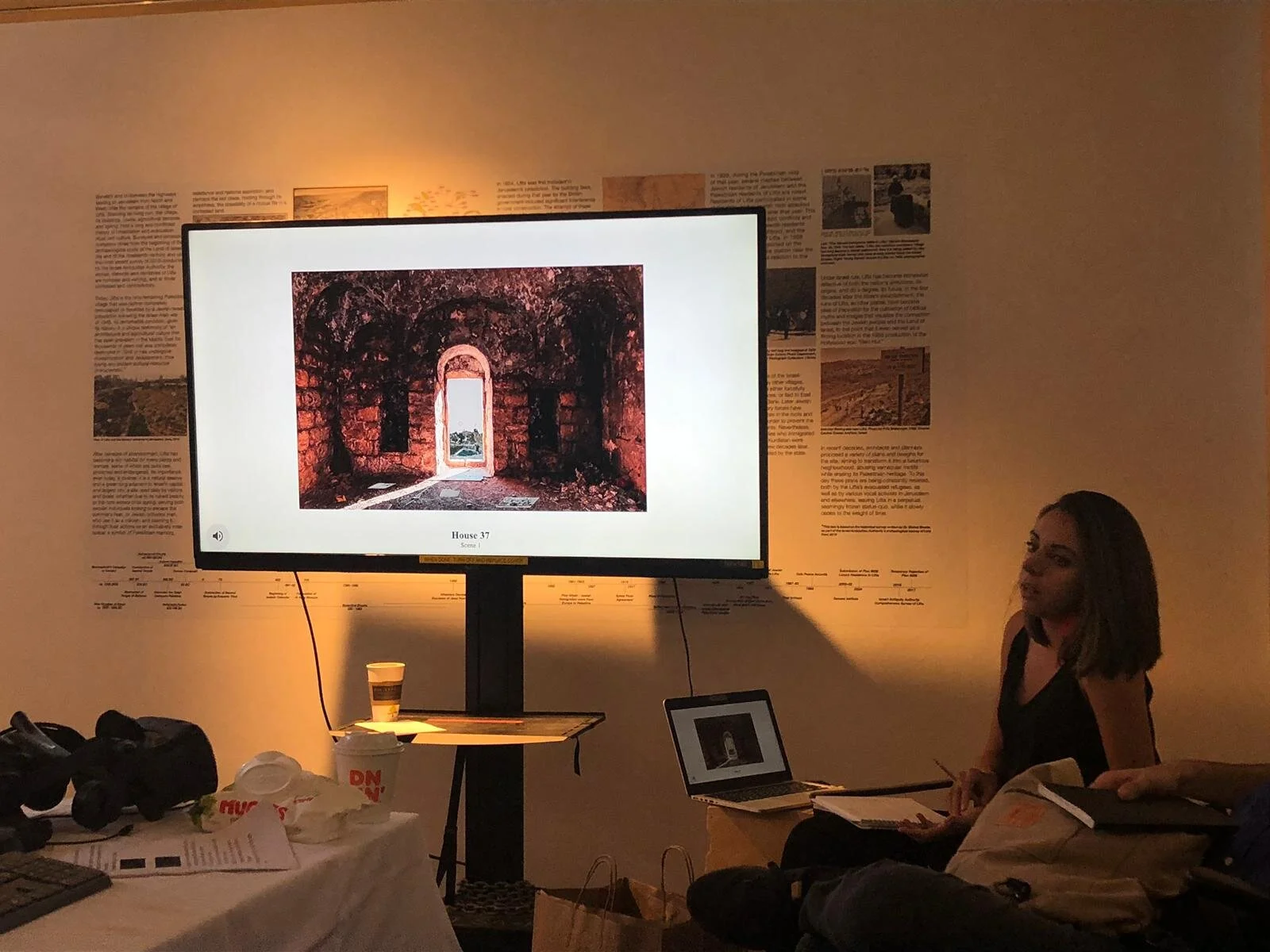Digital Archeology, Virtual Narratives: The Case of Lifta
Instructors: Professor Mark Jarzombek, Professor Takehiko Nagakura, Eliyahu Keller, Eytan Mann
Exhibition Design: Eliyahu Keller, Eytan Mann
Students: Dalma Foldesi, Gabby Heffernan, Matt Ledwidge, Jung In Seo, Radhika Singh, Cristina Solis, Shaoying Tan, David White
The workshop and exhibition are supported by the MISTI Israel Seed Fund, the MIT Department of Architecture, the History, Theory, and Criticism of Architecture and Art Group, and the Design Computation Group.
“Digital Archaeology, Virtual Narratives: The Case of Lifta” is a collaborative workshop bringing together the resources and expertise from the MIT Department of Architecture and the Department of Bible Archeology and Ancient Near East Studies at Ben Gurion University (BGU). Students from the MIT School of Architecture and Planning, in collaboration with archeologists from BGU participated in an interdisciplinary study of the evacuated Palestinian village of Lifta in Jerusalem: one of the only Palestinian villages not destroyed or repopulated by Jews following the 1948 Arab-Israeli. Today, the site which holds archaeological and architectural remains from various historical periods, spanning from Iron Age to the early 20th century, stands uninhabited, yet is filled with past and present conflicts: a symbol of the Palestinian national struggle, a vivid reminder of the consequences of the 1948 war and evacuation, an ecologically diverse landscape, and a contested urban terrain visited daily by locals, tourists, as well as past inhabitants.
Using advanced simulation techniques, 3D scanning, and real-time rendering, as well as an array of archival, historical and scholarly resources, students produced experiential representations of Lifta's contested terrain, in which they challenge both the traditional understanding of the site's past, as well as the traditional approaches to the study of conflicted histories. Working in groups, the students digitally captured of the site using photogrammetry and laser-scanning, and produced several visual installations, making available experiences that present a bricolage of Lifta’s material remains, conceived as a pedagogical tool. The exhibition presents the culmination of these efforts through four immersive and connected virtual reality experiences. In each of these, the audience is exposed to the various narratives and histories in which Lifta was perceived, represented and inhabited, and the narratives constructed by the students, through which Lifta's complex histories can be seen anew.









